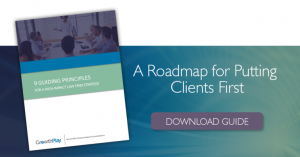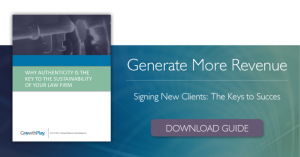This is the third in a series of posts exploring how law firms can set themselves up for success when making the decision to grow through merger, firm acquisition, or lateral hire.
In our previous post, we talked about how post-merger success hinges on crafting a shared mindset that all members of the team embrace. When everyone is on the same page about why you have come together and who you want to be, the next step is to craft a powerful message that communicates your purpose.
But before you can decide what to say, you need to understand what your audience wants and needs to hear. Some questions to consider:
Who is our audience? This will include clients and prospects, of course, but also partners, employees, and the broader marketplace; you might need to tailor messages to each cohort.
- What is the situation they face? This is the business context as well as any cultural/social factors that influence their outlook
- What are their top priorities? If you don’t know what they want, how can you find out?
- What risks and pain points do they face? Sometimes people choose based on preventing the outcome they don’t want rather than welcoming the outcome they do.
- How will they measure success? This might be financials and business goals achieved, or something more abstract like “success” or “satisfaction.”
Armed with this information, you will be ready to craft your message to match the needs of your audience:
- “This is our point of view on how you can be successful…”
- “This is how our recommended approach will help you achieve your top priorities…”
- “Here are the steps we will take to do it…”
- “This is what makes our approach different/better…”
- “Here is the proof…”
Telling the new firm story is a priority too. Understandably, the economic thesis and focus on bottom line post-merger is a high-priority strategic focus. That said, getting to financial success requires buy-in that is driven primarily by social and emotional factors. One way to take those factors into account is to expand beyond a metrics focus and tell a story about who this new firm is and will become. People want to see themselves as part of a narrative about these shared values and goals. Clients and team members will engage more deeply when the story paints a picture of “what’s in it for them” to experience an even better future.
Craft pithy headlines. At the same time, a message (or story) that is too lengthy or complex may lose people. Dive deep into the ideas you want to convey, and then simplify, simplify, simplify until you have distilled your message down to key concepts and a 15- to 30-second Quick Pitch you could message to activate a follow-on question, “Tell me more…”


